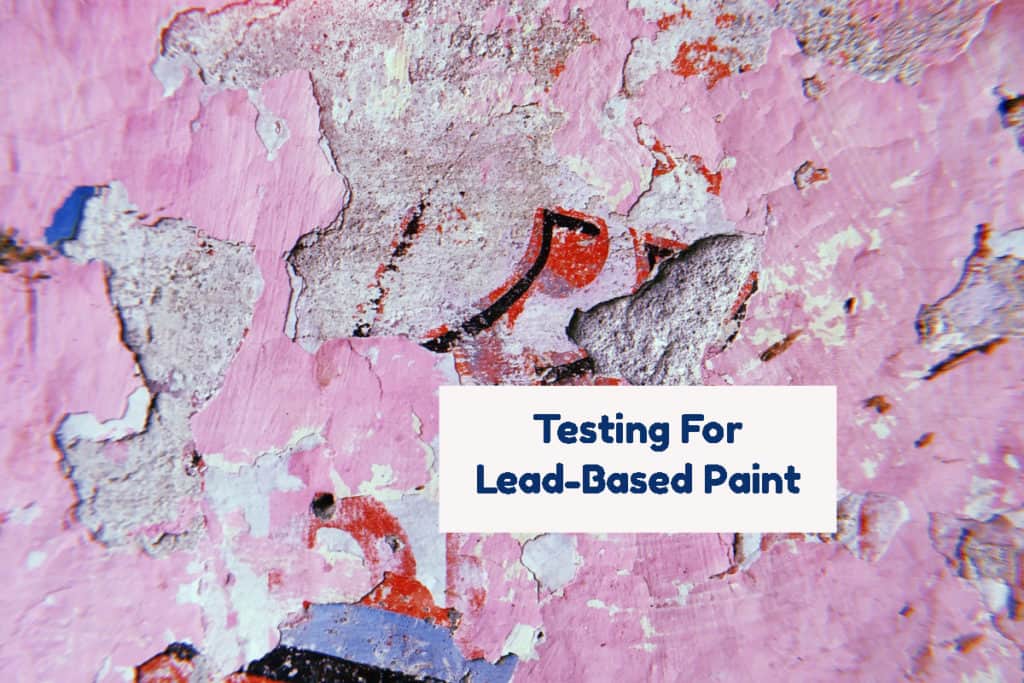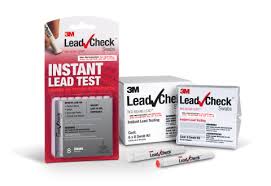Dangers of Lead-Based Paints | Lead Test Kits

Testing For Lead-Based Paints
Lead Toxicity
Lead is a toxic and hazardous metallic element which can cause central nervous system damage. It accumulates in the bones & teeth and is distributed to the brain, kidneys and liver. There is no known level of lead exposure that's considered safe to humans.
Young children are particularly vulnerable to lead exposure and it’s been reported they absorb as much a four times the amount of lead as adults. Pregnant women release lead stored in their bones to a developing fetus if they have been exposed to lead in the past. Lead can affect a child’s brain development resulting in reduced intelligence, behavioural disorders, and other illnesses.
Lead Paint
If you are doing any renovating or painting it is important to know if your home contains any lead -based paints on it’s surfaces.
Canadian homes built before 1960 almost certainly contain these toxic coatings. Structures built before 1978 have about an 80% chance of containing lead based paints. Key dates:
- 1950 : Paints built in 1950 were composed of as much as 50% lead by weight
- Pre 1976 Homes: As much as 80% of homes built prior to 1976 contain some form of lead paint.
- 1976: The government of Canada legislated that the amount of lead in interior paint was limited to 0.5 percent by weight.
- 1976-1990; The Canadian Gov’t states that home exteriors MAY contain lead based paint coatings. Home interiors will contain a much lower percentage,especially after 1976.
- 1990-Current: Homes built after 1990 in Canada contain virtually zero lead based paints.
Lead Testing Kits
Before starting any project it is recommended that you test a surface for lead before scraping & sanding. You can purchase lead test kits at paint & hardware stores. The company 3M sells a product called 'Lead Check Swabs'. It’s simple to use and only takes less than a minute to get a result. Just swab the surface you intend to paint including drywall,plaster,metal or painted wood. If the swab turns red, lead is present. The kits are inexpensive and will give you peace of mind.
Prepping Lead-based Paint
If you plan on painting over the lead based paint it is advisable that you get a proper respirator to protect your lungs from the lead dust when prepping the surface. Use rubber gloves, eye protection and disposable coveralls which can be purchased at most paint stores. Bundle up and don’t leave any exposed skin.
If you can help it, do as minimal dry sanding as possible so it doesn’t create a dust cloud. Use a wet sanding or wet scraping method when preparing a surface. Mist the paint surface using a spray bottle before you scrape it and continue to wet it while scraping. Use drop cloths to collect the paint chips. If you are working inside the house, contain the area by erecting plastic from the ceiling to the floor. We like to use a tool called “Zipwalls” to quickly build plastic containment walls in minutes.
After you are finished, throw away the disposable coveralls in a sealed bag and wash your clothes. Dispose of the lead based paint chips immediately in a safe manner. Little children and pets love to eat paint chips so be careful that they are not present during the prep work.
Paint Sealer & Encapsulation
It’s important to prime & seal the lead based paint. This is called encapsulation. We recommend a product called Insl-X Lead Block.
Lead Block is a water based, elastomeric coating designed to encapsulate lead-based paints. This coating forms a dense, high-solids barrier that blocks and seals to prevent the migration of lead contaminants from reaching the surface. After encapsulating you can use any quality paint as a topcoat.


